Photo Credits:(っ◔◡◔)っ Clement 🇰🇷
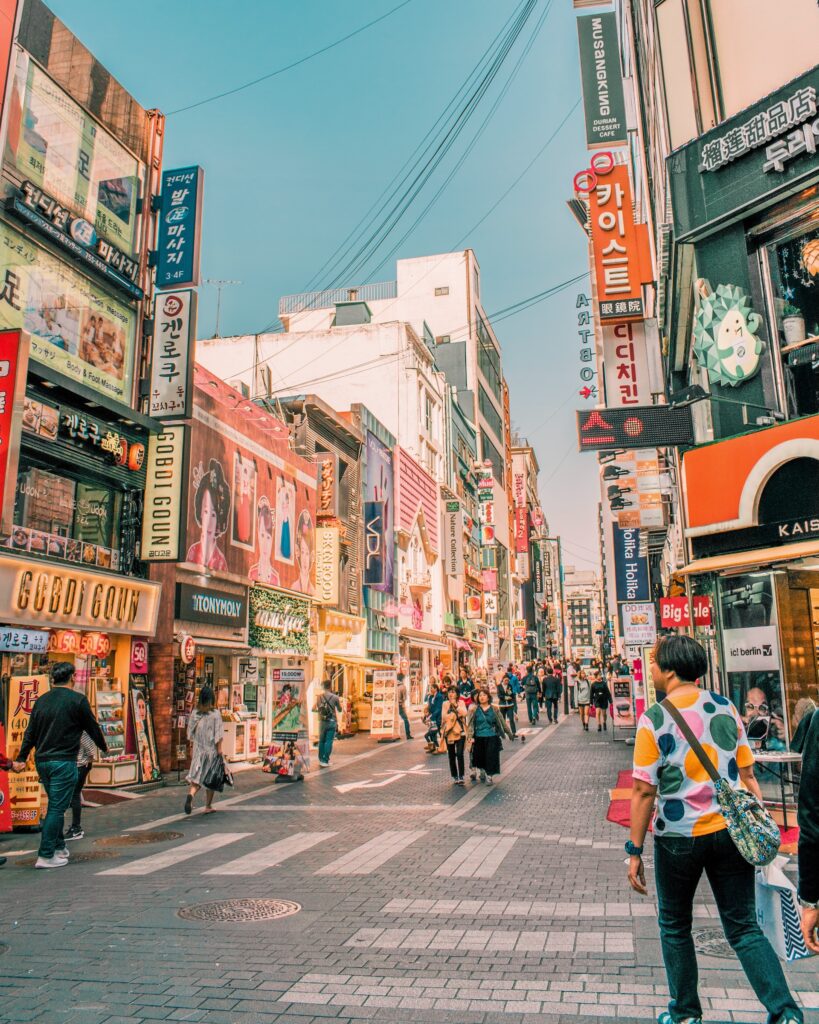
South Korea is a country that never fails to amaze travelers with its unique blend of ancient traditions and modern technology. Nestled in the heart of East Asia, this vibrant nation has a colorful past and a rich culture that has stood the test of time. From its iconic landmarks and stunning landscapes to its vibrant festivals and mouth-watering cuisine, there’s no shortage of things to discover in South Korea.
Discovering the Rich History and Culture of South Korea
Centuries ago, South Korea was known as the Joseon Dynasty, a feudalistic kingdom that flourished from the late 14th century to the late 19th century. During this time, the Korean people developed a distinct culture that is still evident today. You can experience this rich history firsthand by visiting the Gyeongbokgung Palace, the largest and most grandiose of the five palaces built by the Joseon Dynasty. Its intricate architecture and serene gardens offer an unforgettable glimpse into the royal past of South Korea.
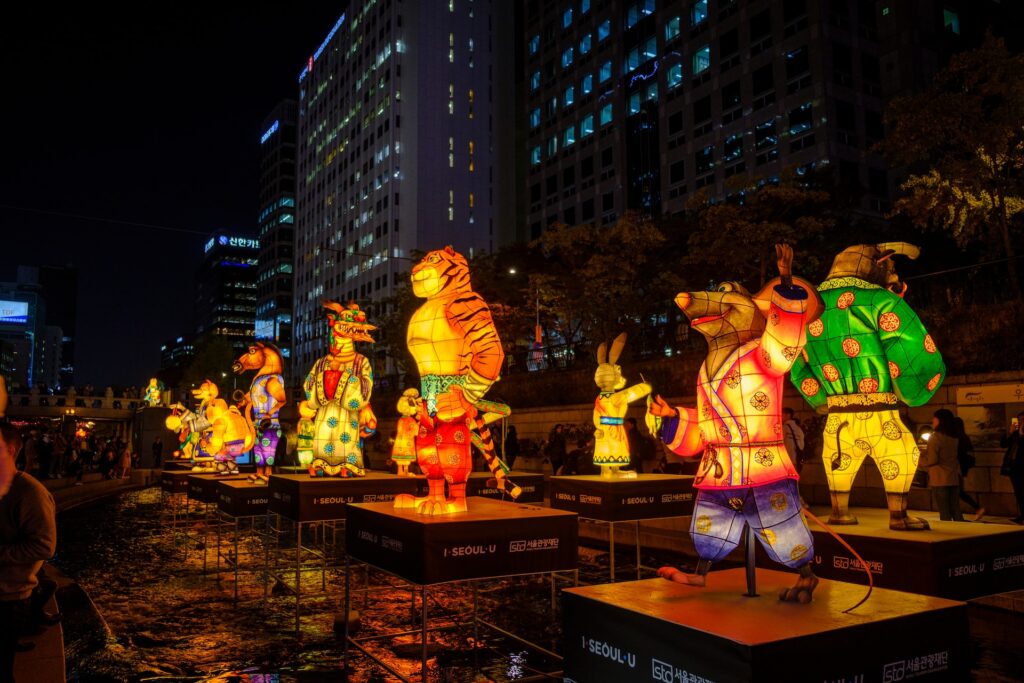
The Korean people have a deep respect for their traditions and are proud of their rich cultural heritage. One of the most important aspects of Korean culture is the emphasis on family and community. You’ll often find South Koreans gathering together for family meals, festivals, and celebrations. The Boryeong Mud Festival, for example, is a two-week event held in July that brings together locals and tourists alike to celebrate the health benefits of mud. From mud wrestling competitions to mud slides, this festival is a fun and unique way to experience the Korean culture.
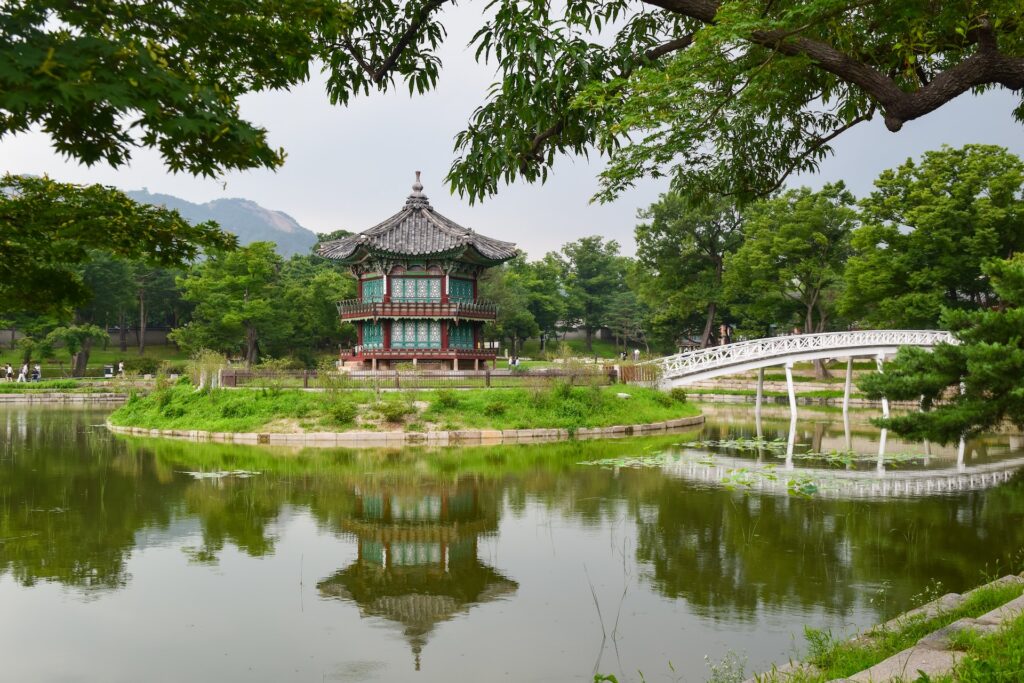
Finally, South Korea’s evolution into a global economic powerhouse is also a testament to the country’s rich culture. With a strong emphasis on innovation and technological advancement, South Korea has become a leader in fields like electronics, automotive, and entertainment. The world-renowned K-pop music industry, for example, has its roots in South Korea and has taken the world by storm with its catchy beats and colorful performances. In recent years, South Korea has also become a hub for start-ups and entrepreneurship, with a thriving tech scene that is constantly pushing boundaries.
Discovering the Unique Customs of South Korea – Seollal, Chuseok, and Pyebaek
Seollal
Seollal, also known as the Korean Lunar New Year, is one of the most significant and widely celebrated holidays in South Korea. It is usually observed on the first day of the lunar calendar, which usually falls between late January and mid-February. During this time, many Koreans travel back to their hometowns to spend time with their families and offer ancestral rites. Some of the traditional foods that you will come across during Seollal are rice cake soup, pan-fried beef, and various types of Korean pancakes filled with sweet or savory ingredients. You can also witness traditional Sebae ceremonies where younger family members bow to their elders to show respect and receive blessings and good luck for the coming year.
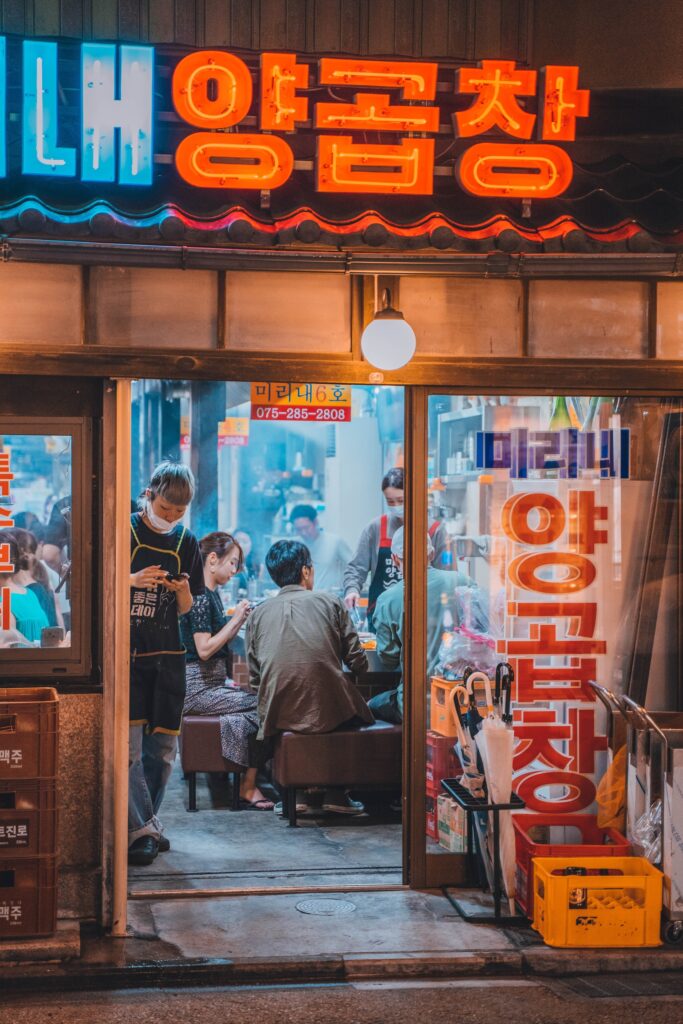
Chuseok
Chuseok is another important holiday in South Korea that falls on the 15th day of the eighth lunar month. In Western terms, it is known as the Harvest Moon Festival. This holiday is all about food, family, and gratitude for the bountiful harvest. Many Koreans travel back home during Chuseok to visit their families and participate in ancestral rites. Chuseok is also known for its traditional food, including Songpyeon, glutinous rice cakes filled with sweet or savory ingredients, and various side dishes made from the year’s harvest. One unique custom that you will witness during Chuseok is the Ganggangsullae, a traditional Korean circle dance performed by women to celebrate the harvest and pray for a better future.
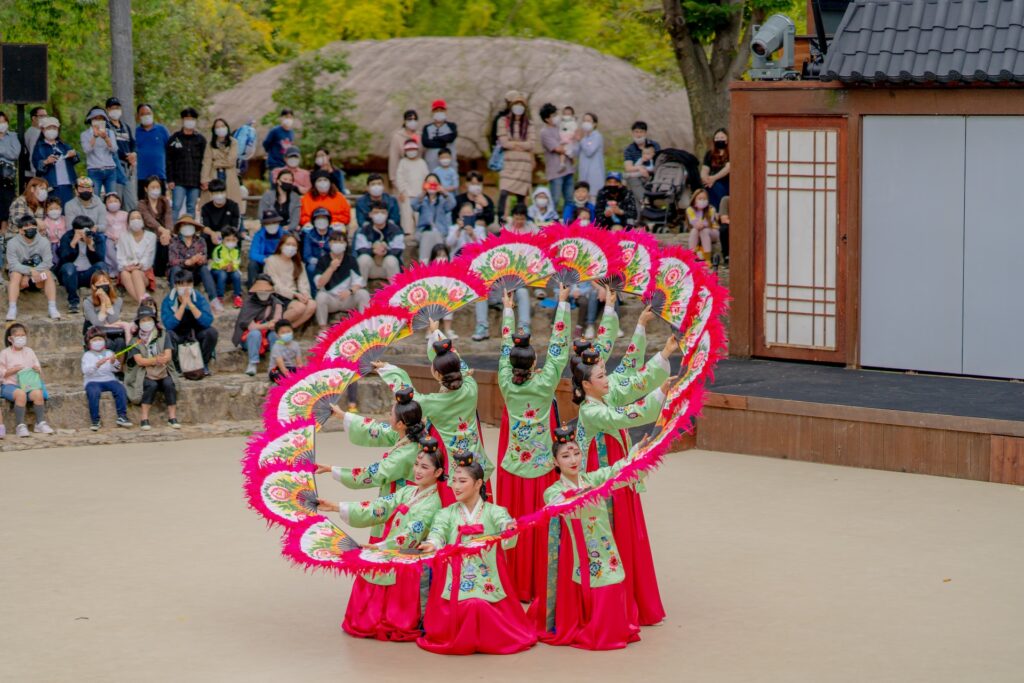
Pyebaek
Pyebaek is a traditional Korean wedding custom that has been practiced for centuries. This custom is a formal family gathering where the bride and groom pay their respects to their parents and grandparents and receive blessings for a happy and prosperous life together. During Pyebaek, the bride and groom bow to their parents and offer traditional dishes like sweet rice cakes, fruits, and alcohol. The parents, in return, offer words of wisdom and blessings to the couple, wishing them a happy marriage and a long life together. Pyebaek is a beautiful and intimate ceremony that represents the strong family ties and values in Korean culture.
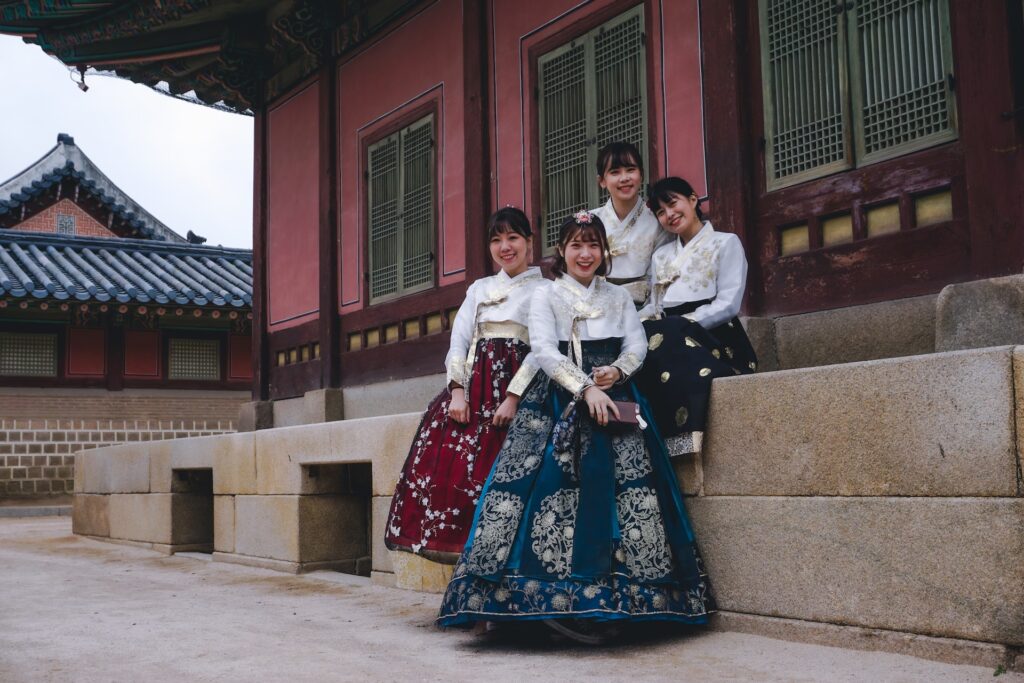
Exploring South Korea’s Incredible Cuisine – From Kimchi to Bibimbap
South Korea is a land of vibrant culture, stunning landscapes, and mouth-watering cuisine. From spicy and sour kimchi to savory bibimbap, Korean cuisine is both diverse and delicious. Whether you’re a seasoned traveler or a first-time visitor to the Land of the Morning Calm, you won’t want to miss exploring the incredible cuisine that South Korea has to offer.
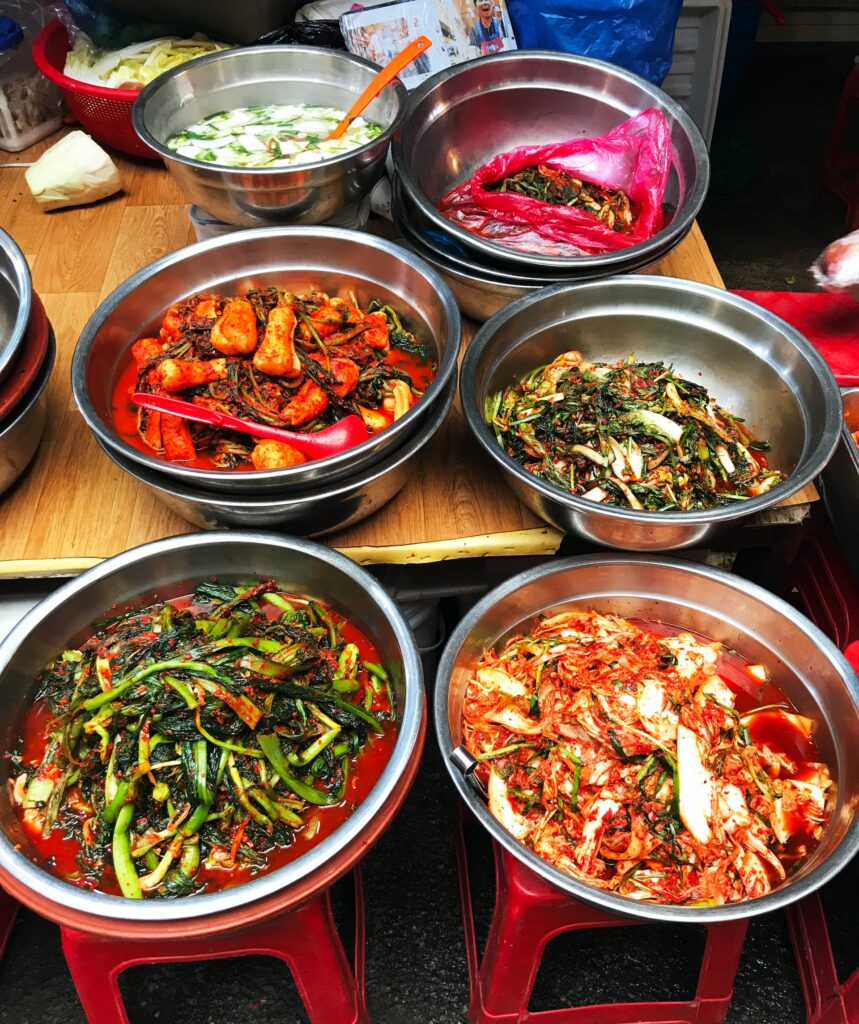
Kimchi – The Signature Dish of South Korea
If there’s one dish that captures the essence of Korean cuisine, it’s kimchi. This spicy and sour fermented cabbage dish is a staple of Korean meals and has been a favorite for centuries. Made with a mix of cabbage, chili pepper flakes, garlic, ginger, and fish sauce, kimchi is a perfect accompaniment to any Korean meal. While there are many varieties of kimchi available, the most popular types are the baechu kimchi (made with napa cabbage) and the kkakdugi kimchi (made with cubed radish). You can enjoy kimchi as a side dish or use it as an ingredient in stews and soups.
Bibimbap – Rice Bowl Delight
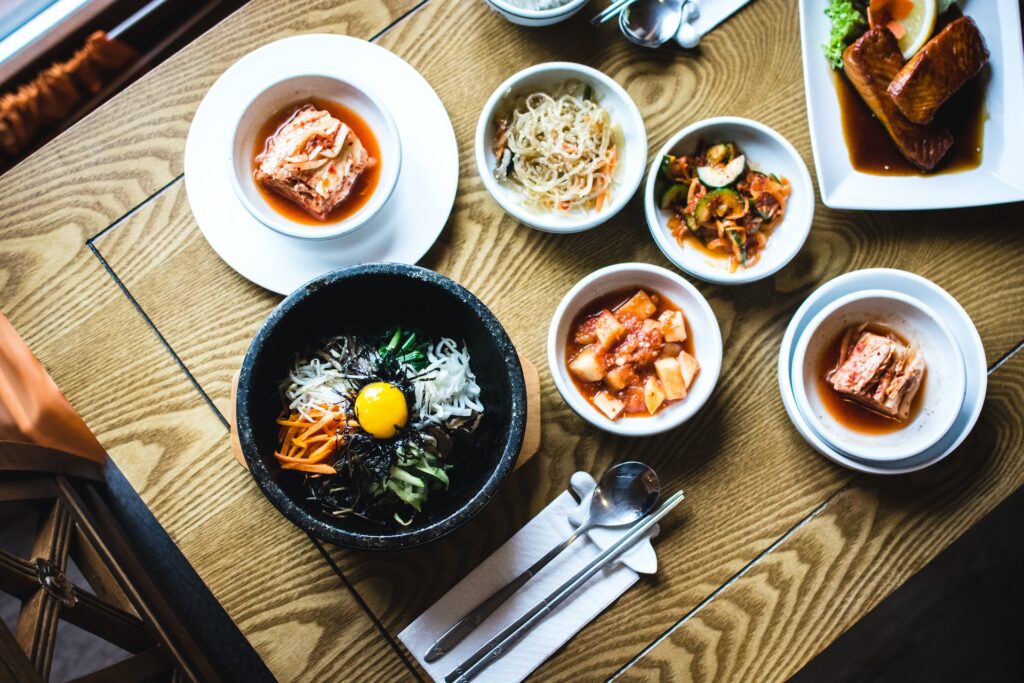
Bibimbap is another popular Korean dish that you simply cannot miss. This rice bowl dish is jam-packed with vegetables, meat (or tofu), egg, and gochujang (fermented chili sauce). The name bibimbap means “mixed rice,” and that’s precisely what the dish is all about. You can mix everything together before eating, resulting in a lovely combination of flavors and textures. There are many variations of bibimbap available, but the most famous is the dolsot bibimbap, served in a sizzling hot stone bowl.
Korean Fried Chicken – Finger-Licking Goodness
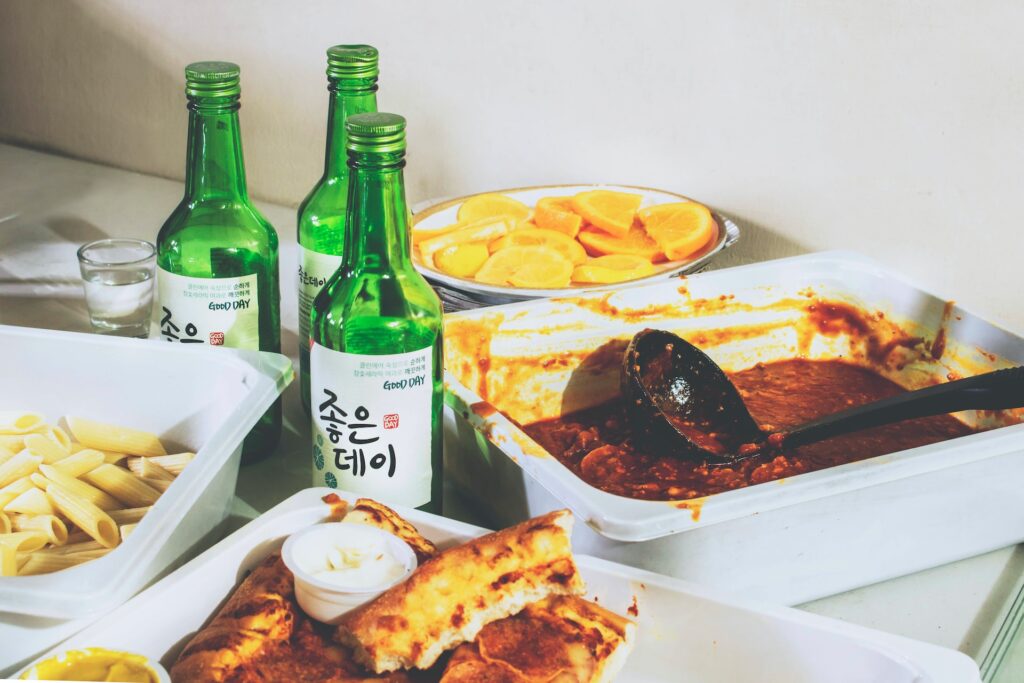
If you’re a fan of fried chicken, then Korean fried chicken is a must-try. Unlike its American counterpart, Korean fried chicken is double-fried, resulting in a unique crispy and crunchy texture. Korean fried chicken is often served with a variety of sauces, ranging from sweet and spicy to soy garlic. You can enjoy it as a snack or pair it with beer (or soju, the popular Korean liquor) for the ultimate experience.
Japchae – Stir-Fried Sweet Potato Noodles
If you’re looking for a vegetarian Korean dish, then Japchae is a great option. This stir-fried dish is made with sweet potato noodles, vegetables (such as spinach and carrots), and beef (or tofu). The noodles are chewy and slightly sweet, while the vegetables add a burst of color and flavor. Japchae is a perfect dish for lunch, dinner, or even a light snack.
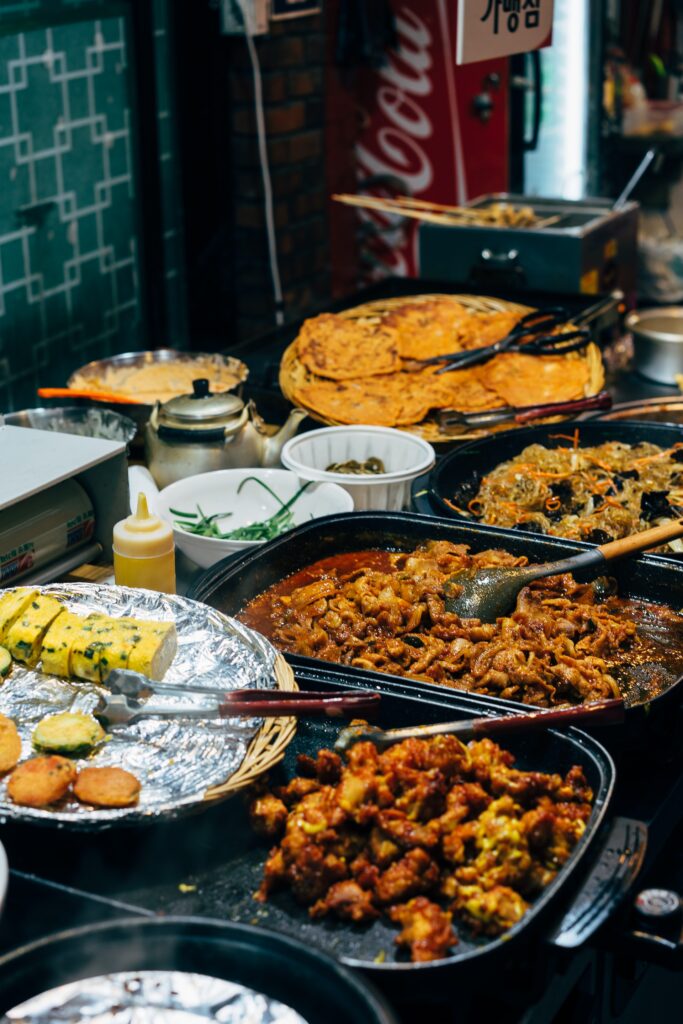
Tteokbokki – Spicy Rice Cakes
Tteokbokki is a popular street food in South Korea, made with chewy rice cakes in a spicy and sweet chili sauce. This dish is often served with boiled eggs, fish cakes, and spring onions, enhancing the overall flavor of the dish. While tteokbokki is a bit on the spicy side, it’s an excellent dish for those who love a bit of heat in their food. You can find tteokbokki in street stalls, restaurants, and even convenience stores in South Korea.
The Ultimate Guide to Getting Captivated with the Scenic Landscapes of South Korea
Experience the Beauty of Korea’s Mountains
Prepare your hiking boots because South Korea has several mountains that offer stunning views. One of the famous mountains is Mount Seorak, located in Gangwon province. It’s the third-highest mountain in South Korea and known for its beautifully eerie scenery. You can either hike the mountain or take a cable car to get to the summit. Another famous mountain is Mount Hallasan located in Jeju Island, South Korea’s largest island. It’s a UNESCO World Heritage Site and has several hiking trails that offer great views of the island.
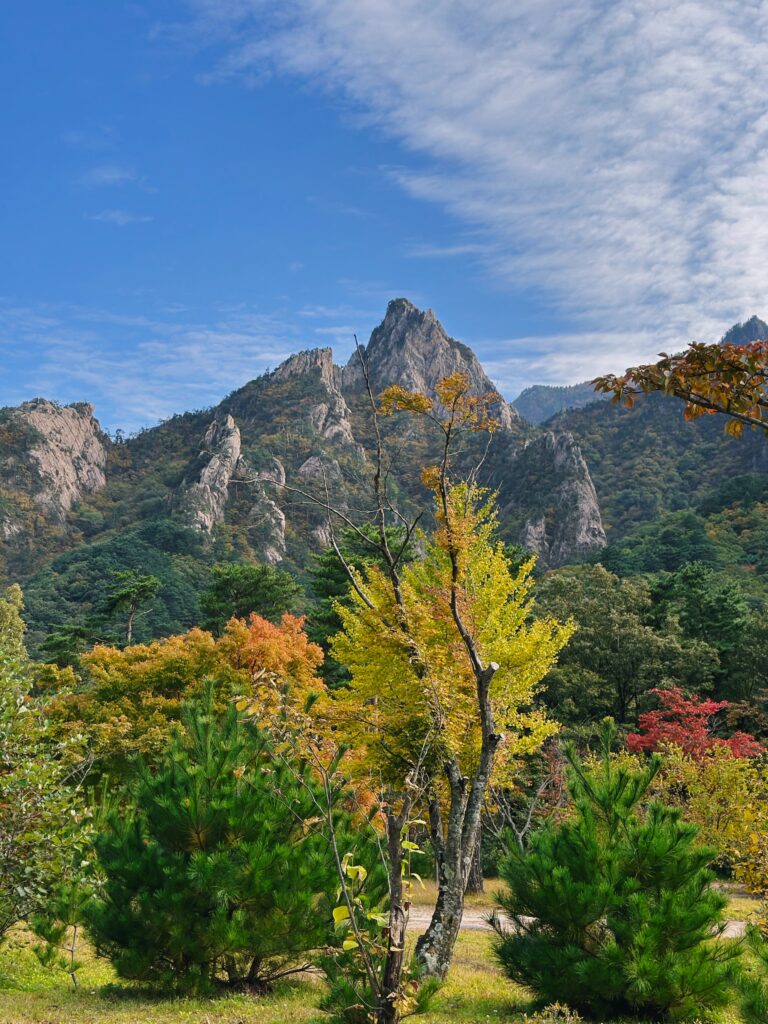
Explore the Charm of Korea’s Rivers and Seacoast
Aside from mountains, South Korea also has rivers and seacoast that are worth exploring. One of the famous rivers is the Han River, which flows through the heart of Seoul. You can take a cruise along the river and admire the vibrant city skyline. Another highlight is the Nakdong River, the longest river in South Korea, which flows through several cities including Busan. The seacoast also offers a unique beauty, such as the seaside cliffs of Jusangjeolli located in Jeju Island, or the famous beaches in Busan like Haeundae and Gwangalli.

Discover the Vibrant Cities of Seoul, Busan, and Jeju Island
South Korea is known for its thriving cities, and Seoul, Busan, and Jeju Island are the must-visit cities in this country. Explore Seoul’s traditional and modern architecture, like the Gyeongbokgung Palace and the Namsan Tower. Traverse the vibrant streets of Busan, most notably the Haeundae Beach and the Gamcheon Cultural Village. Lastly, discover the natural wonders of Jeju Island, like the Jeju Olle Trail and the Manjanggul Cave.
Experience South Korea’s Four Seasons
Lastly, South Korea offers a unique experience for each season. In spring, you’ll witness the blooming cherry blossoms in Seoul. In summer, head to the beaches of Busan and Jeju Island. In fall, catch the autumn leaves in Mount Seorak or Nami Island. Lastly, in winter, experience the winter sports like skiing and snowboarding in Pyeongchang, where the Winter Olympics were held in 2018.
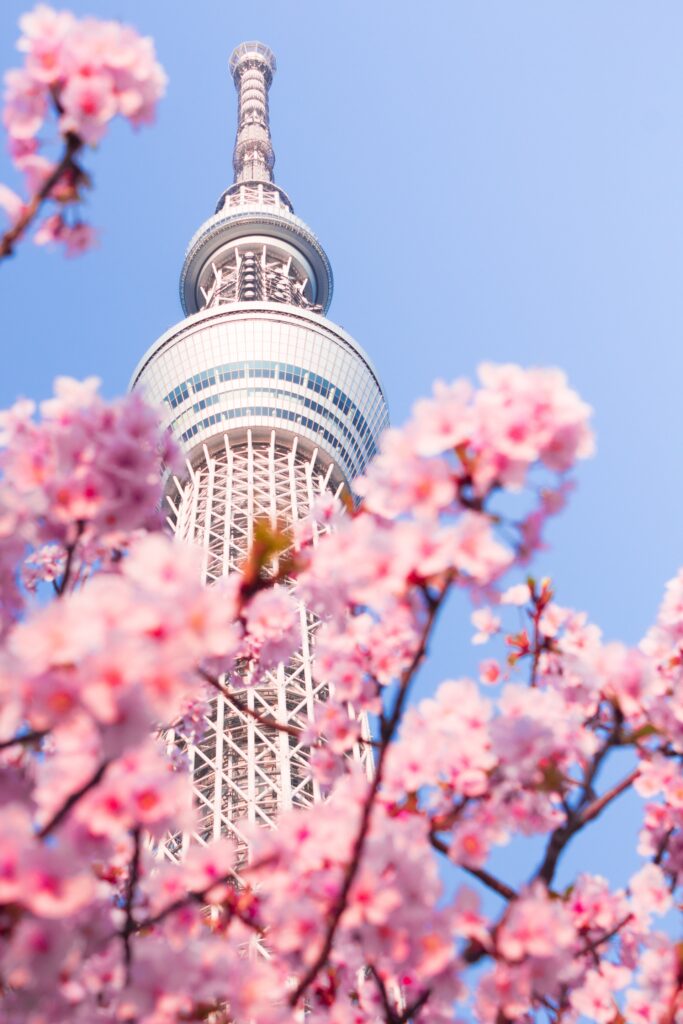
The K-Pop Music Craze: A Journey into the Global Phenomenon
K-Pop music started gaining attention in the 1990s, where it was primarily limited to the Korean peninsula. However, the industry truly stepped up its game in the 2000s, giving birth to several groups at the peak of their popularity, including Girls’ Generation, BIGBANG, and EXO. These bands quickly gained international acclamation, leading to widespread recognition and popularity. The music industry has come from its root beginnings and has become one of the essential industries in Korea.
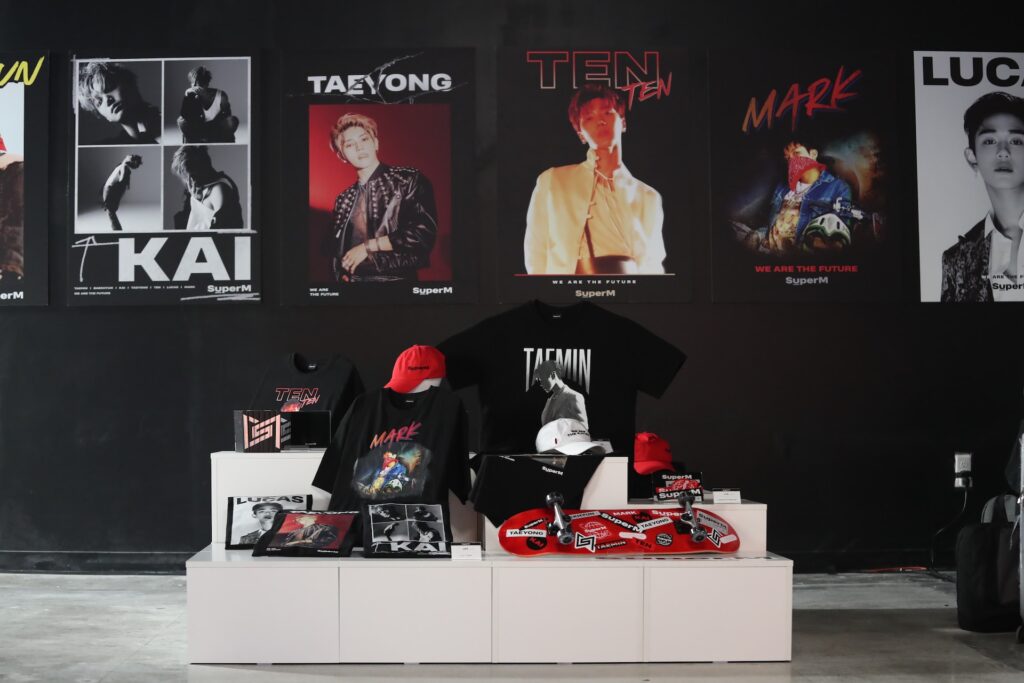
One of the things that make K-pop music stand out is its addictive beats and stylized choreography. It follows a fast-paced, often upbeat tempo, and employs a lot of catchy hooks and repetitive lyrics – it is difficult not to get absorbed in it. The elaborate dance routines and music productions are executed with impeccable artistry and precision. Additionally, K-Pop songs often have elements of the Korean language, further blending traditional Korean cultural aspects into the music style.
K-Pop music is not just a sound; it is a whole culture. K-pop is much more than just music. It includes elaborately produced music videos, along with an aesthetic set up, vibrant fashion styles, and a sense of community. The music industry comprises of highly stylized groups of singers and dancers who give their best to deliver the best of their music and spectacle to their audiences. K-Pop idols follow a strict code of conduct, and their fans admire them for their discipline, as much as they adore them for their talent.
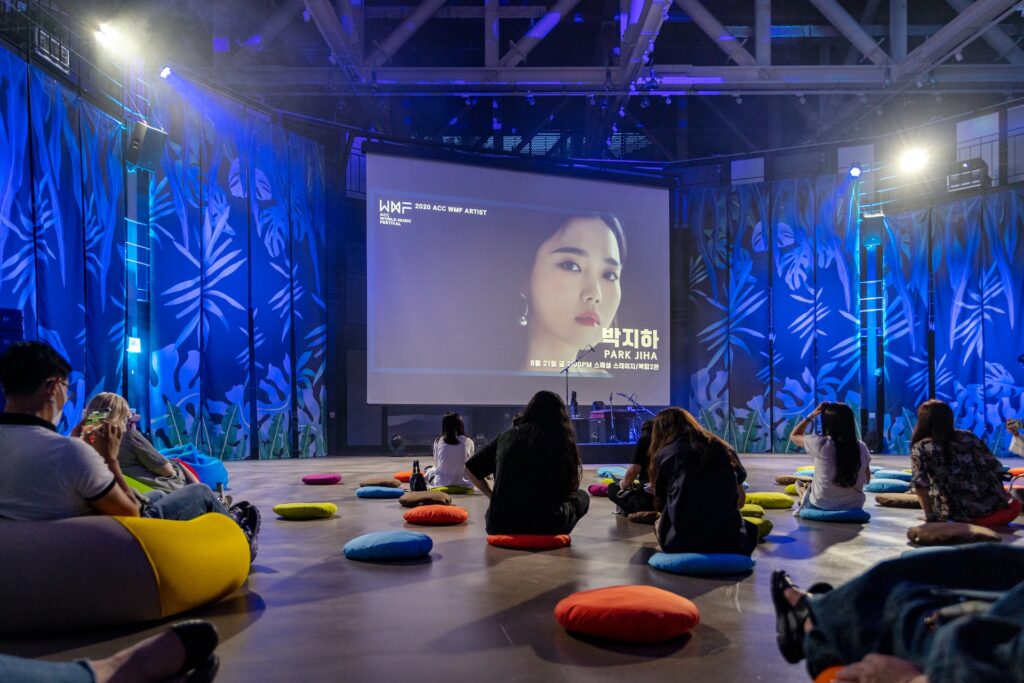
K-Pop Idols are often trained from young ages, undergo tough practices to perfect their singing and dancing skills. They often spend many years refining their craft before making their official debuts. Therefore, they are highly skilled and trained professionals who work hard to give their fans an unforgettable experience.
Exploring South Korea’s Rich Cultural Heritage through Ancient Temples and Palaces
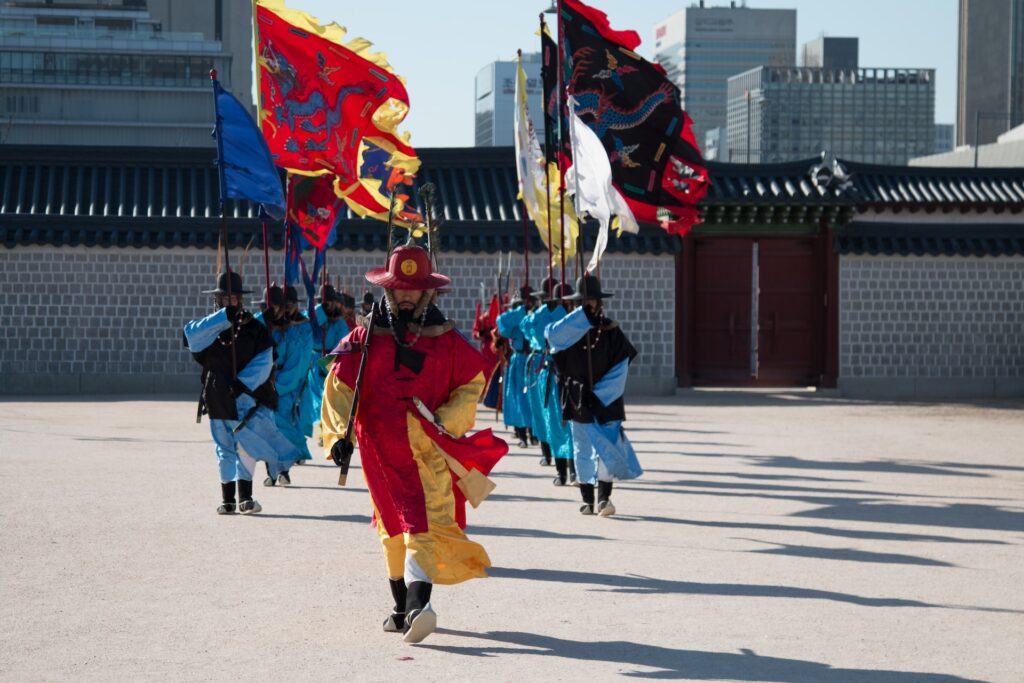
Gyeongbokgung Palace, built in 1395, is not only one of Seoul’s grandest palaces but also one of Korea’s most iconic landmarks. This royal palace is a symbol of South Korea’s culture, history, and architecture. Visitors can witness the colorful Changing of the Guard ceremony that happens hourly during the daytime. They can also join one of the many cultural activities held at the palace, from traditional clothing rentals to learning martial arts from Korea’s legendary assassin council.
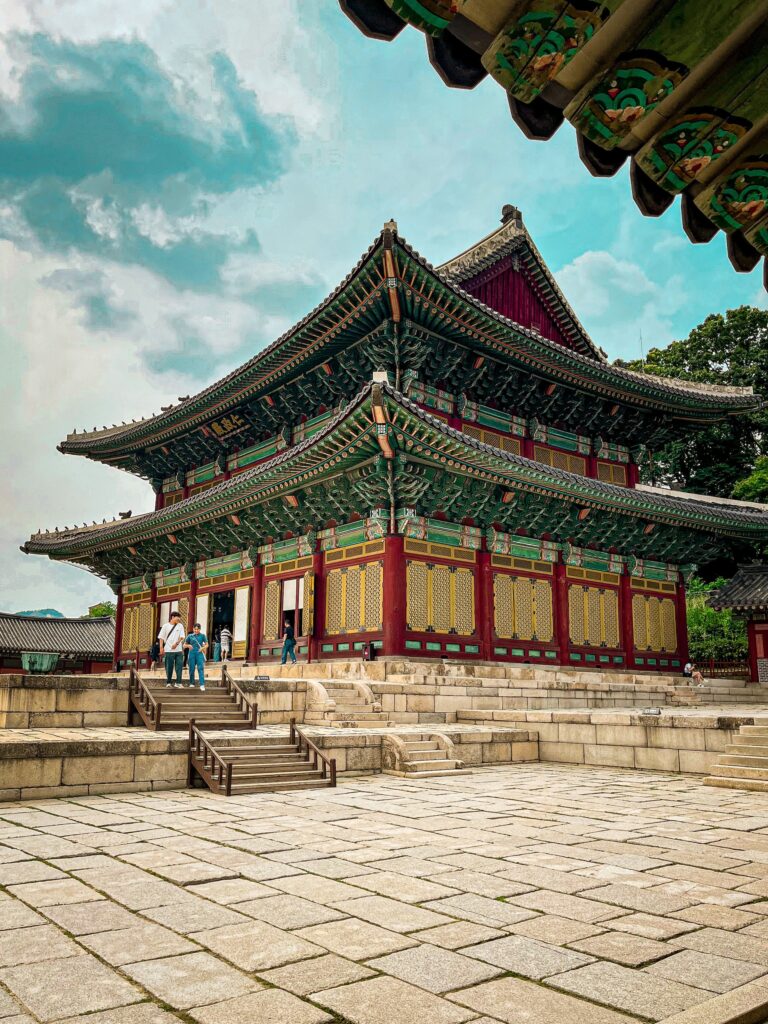
Another must-visit attraction is the Seokguram Grotto temple in Gyeongju City. It’s a UNESCO World Heritage site and one of Korea’s most fascinating temples. The temple stands atop a mountain and is accessible only through a winding path that spans 2km. Once you reach the grotto, you will see an enormous stone Buddha statue that dates back to the 8th century. The grotto is a marvel of ancient engineering and considered one of Korea’s greatest Buddhist temples.
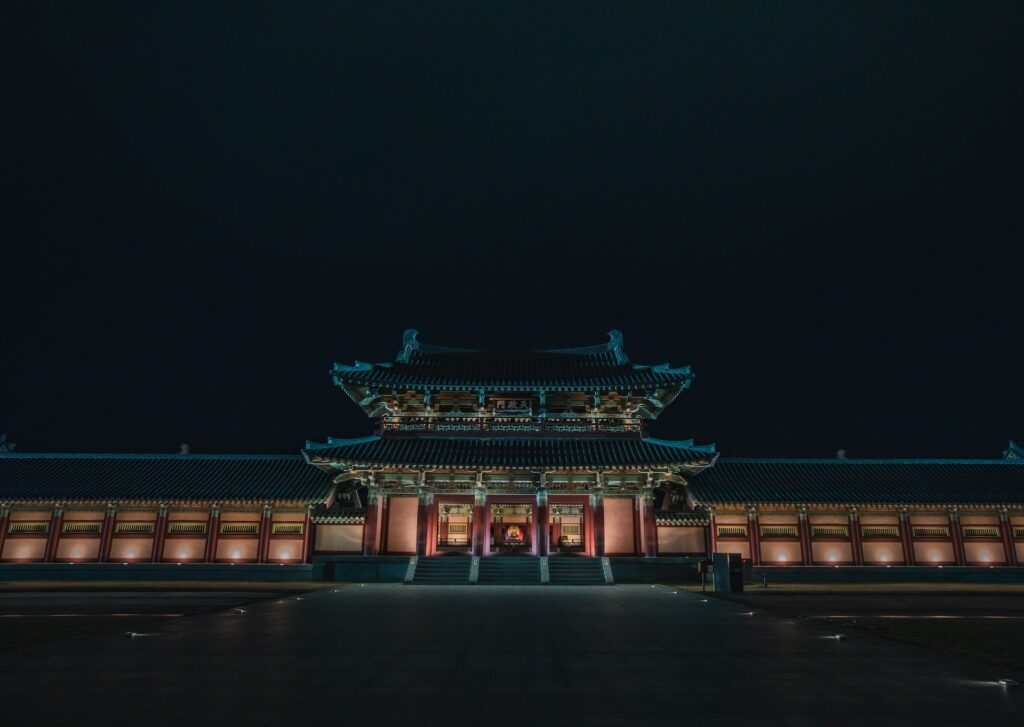
Hwaseong Fortress in Suwon is another popular Korean historical landmark that is well worth a visit. It was built to protect the city from outside invaders in the late 18th century and has managed to remain relatively intact since then. Visitors can stroll along the fortress, imagination takes them back in time to the regal era of Joseon dynasty. They can also see the secrets of Suwon’s craftsmen, water mills, and temples.
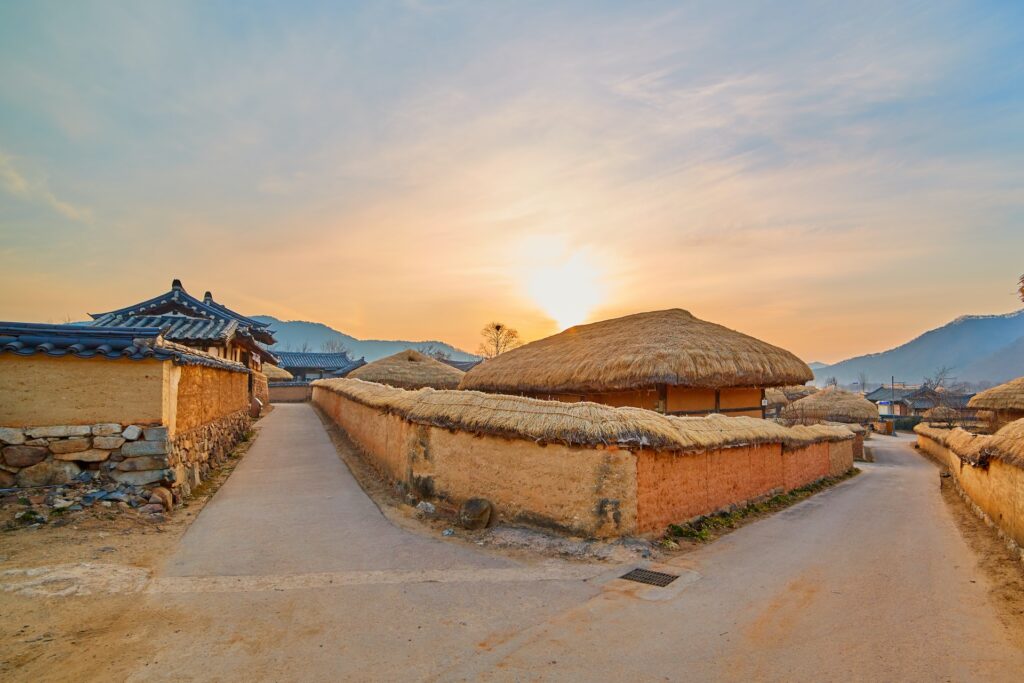
For a taste of traditional Korea, head to one of the many folk villages scattered across the country. One of the most popular is the Andong Hahoe Folk Village, located in the southeast of Korea. This folk village dates back to the Joseon Dynasty and gives visitors a glimpse of ancient Korean rural life. They can take their time and stroll through the lush greenery, experience local customs and even enjoy performances of traditional Korean mask dances and music.
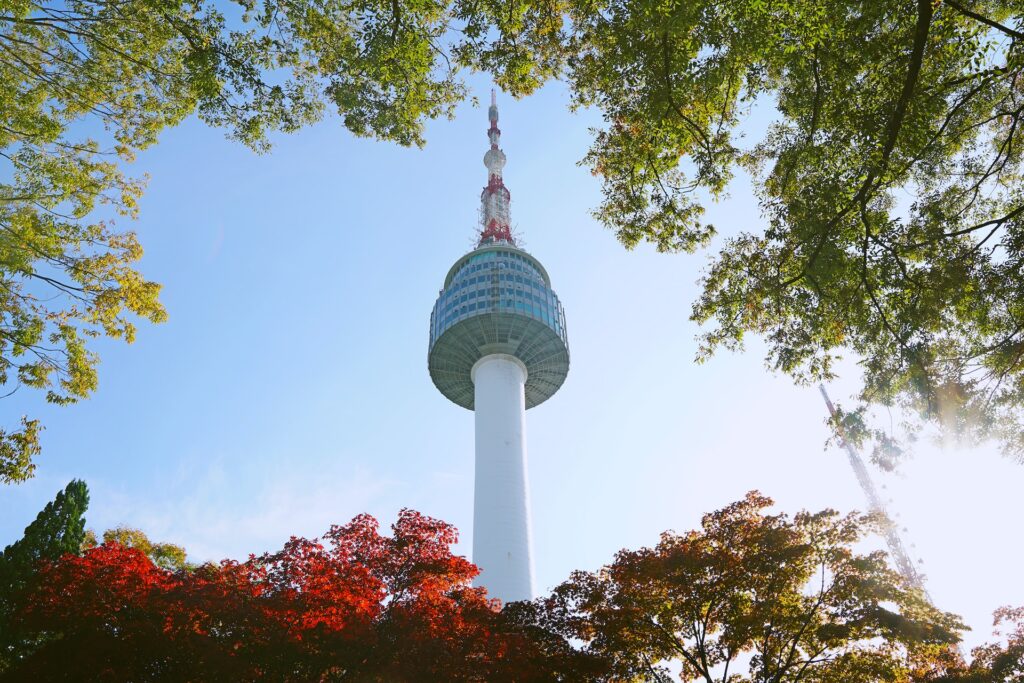
South Korea is a country with a fascinating history and rich culture that has evolved over centuries. From its royal palaces and traditional festivals to its innovative businesses and thriving industries, there’s truly something for everyone in this vibrant nation. By immersing yourself in the unique traditions and experiences of South Korea, you’ll gain a deeper appreciation for its people and its incredible culture.

Get Ready For An Unforgettable Trip To Korea